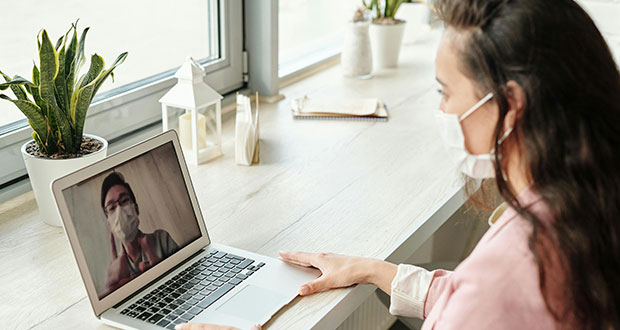
Telemedicine Booms amid COVID-19 Crisis; Virtual Care is Here to Stay.
April 29, 2020
The coronavirus pandemic that has erupted worldwide has pushed telehealth to the forefront. It's unlikely remote medicine will go away, even after the current crisis abates.
Demand for telehealth systems has boomed in response to the ongoing COVID-19 pandemic, setting the stage for telemedicine to finally achieve at least some of its long-promised benefits. And analysts expect widespread use to continue even after the current crisis abates.
The coronavirus outbreak that has infected almost 3 million people worldwide and killed nearly 200,000 (including more than 50,00 in the U.S. alone) will “forever change the way consumers seek and receive healthcare"
[ Related: Telehealth after COVID-19 ]
“While the pandemic will prove the value of virtual care in a crisis, it will also demonstrate the effectiveness of ongoing chronic care management,” “This moment will have a lasting effect on the adoption of virtual care and accelerate the shift from in-person care to virtual first engagement for multiple conditions and use cases.”
Telehealth broadly involves the remote provision of healthcare between doctors and patients, most often by way of video consultations, though it can also be used for teleradiology and remote patient monitoring.
The use of telehealth applications has been rising steadily for years, though adoption has varied across different organizations. As of January, only 24% of U.S. healthcare organizations had a virtual care program in place, according to Forrester.
That’s changed rapidly in recent months as COVID-19 spread, forcing people to avoid doctors’ offices, hospitals, medical clinics – and, of course, the workplace. Into the resulting gap, telehealth companies have moved to enable doctors to connect with their patients remotely.
Telehealth firms see ‘explosive’ spikes in demand
“That is explosive growth,” Daniel Ruppar said. “Similar to how other consumer platforms like Zoom have exploded, that's the same impact that’s gone on in telehealth.”
He was referring to the Zoom videoconferencing platform, which has had a quick, but rocky, growth spot as work-from-home employees have turned to what is seen as an easy-to-use way to video chat with colleagues. That, in turn, exposed a number of security vulnerabilities in the platform that Zoom is working to correct.
For Cardio Phoenix Inc, a cardiac-telemedicine provider, the recent surge has made them the ideal healthcare strategy for treating patients with CVD´s during and after the COVID-19 pandemic.
While the need for remote care will not be as acute once the pandemic crisis subsides, demand for telehealth systems will likely remain high. Forrester now expects more than one billion virtual care visits this year, the vast majority of them related to COVID-19.
“There's definitely going to be a behavioral change with both providers and consumers around telehealth that will be lasting,” said Ruppar.
As patients become more familiar with the technology, telehealth systems could be used widely for non-COVID-19 issues, said Lynne Dunbrack, a research vice president at research firm IDC’s Health Insights Division.
“…After the crisis subsides, there will be a patient population that will want to continue to receive care online for some things, like managing chronic conditions, follow-up visits after an inpatient stay, surgery or to discuss diagnostic results,” she said.
In this case, it will be important for healthcare providers to ensure that patients are aware of the availability of services.
Related: In Mexico, MediQo is improving the way of providing care
“While patients may be aware of virtual care services provided by their health plan or employer, they may not be aware that their healthcare provider is also offering virtual care visits for non-COVID-19 issues,” she said.
Baird is bullish on the long-term prospects for adoption after the crisis. “While we expect that the waters will recede a little … we think that the providers that have now used [telehealth] and have seen that this is very useful in surveying their patients, and to help them reach more people and provide quality care – there's no way that doesn't stick in some way.”
